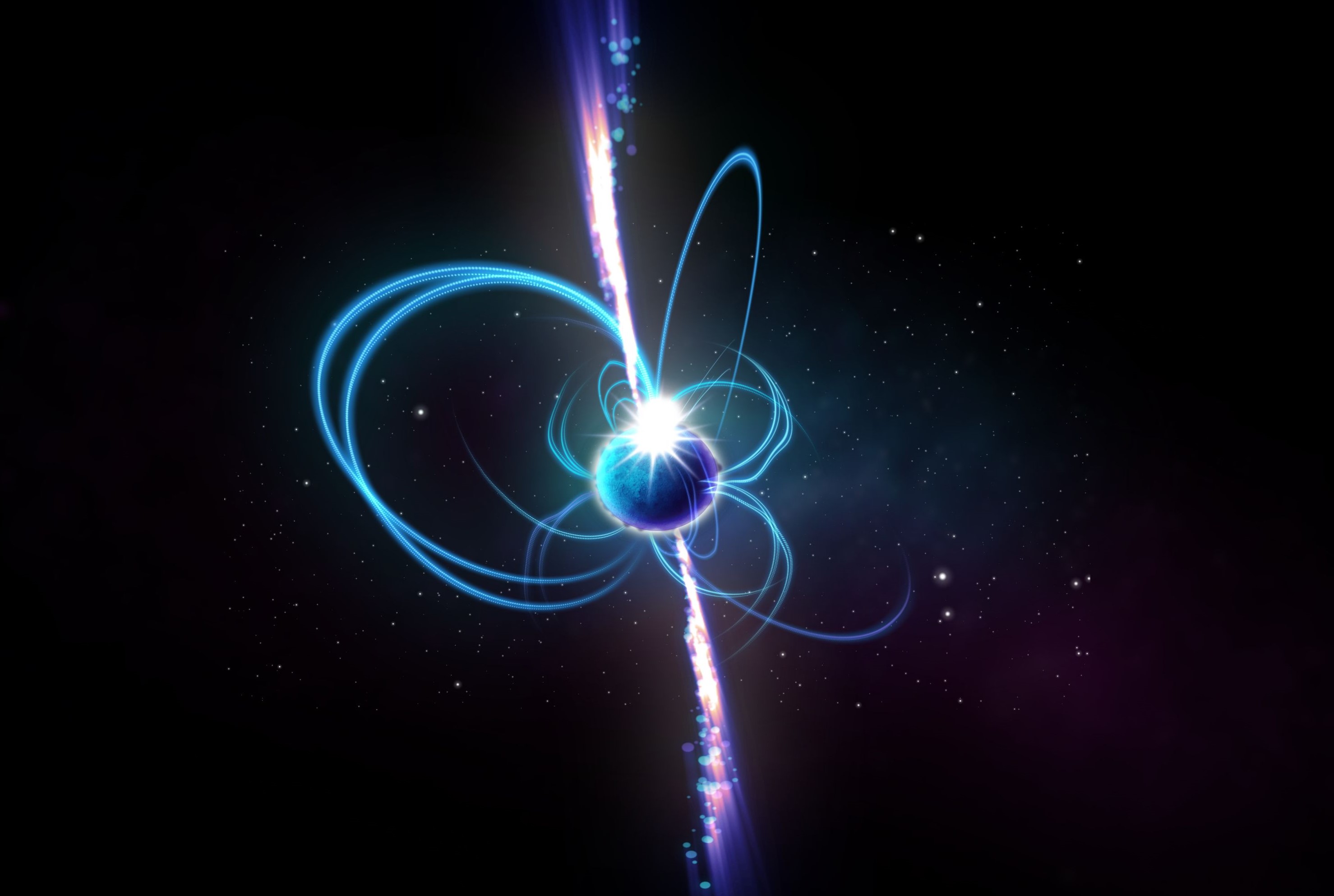 Earth & Space
Earth & Space
The Discovery Of An Unusual Repeating Radio Transient
We have discovered a new kind of repeating radio source using a sensitive low-frequency radio telescope in outback Western Australia. Its unusual properties indicate it could be a kind of never-before-detected object: an ultra-long-period magnetar.

Radio astronomy is experiencing a renaissance due to global work toward the Square Kilometer Array, which will be the world’s largest radio telescope. Our team works on a radio telescope that explores new technologies for the SKA: the Murchison Widefield Array. It observes at low radio frequencies (72—300MHz, overlapping FM radio and digital TV) so is located at a very radio-quiet site in outback Western Australia, where we can obtain an exquisite view of cosmic radio signals.
o understand a multitude of astrophysical objectsT, my team is conducting a large astronomical map of the southern sky at low radio frequencies, an extension to the xGaLactic and Extragalactic All-sky MWA (GLEAM) survey. To build up a deep and sensitive image, we observe the same sky multiple times. This gave us the opportunity to try searching the data in a different way. Rather than averaging the data together, we could subtract one dataset from another, thereby seeing what changes.
The radio sky at low frequencies is dominated by very distant, very large objects: galaxies producing plumes of emission tens of thousands of light years across, entire clusters of galaxies colliding over tens of millions of years, and closer to home, the remains of thousand-year-old stellar explosions. Since these objects are all large, they cannot change on short timescales, and we expected our observations to turn up simply a null result.
However, we found something very unusual. In an observation toward our own Milky Way galaxy, we found a radio source that appeared and disappeared over the course of a single two-minute observation, changing its brightness over 30 to 60 seconds. Looking through our large archives of data, we retrieved 70 further instances of this source at the same location. To our surprise, we found that the pulsations were repeating every 18.18 minutes. This is an extremely unusual timescale for astronomical objects to repeat and has never been observed before.
Occasionally the source produced very narrow “spikes” of radio waves, unresolved by our 0.5-second resolution measurements. This implies that the source is less than half a light second across — smaller than an ordinary star. A further clue to the source’s nature was that the emission was highly linearly polarised, which in astrophysics usually indicates that it has been produced by ordered magnetic fields. To produce the extremely regular repetition, we need a rotating compact object. A good candidate would be a pulsar, which is a rotating neutron star with extreme magnetic fields. These are like cosmic lighthouses: they beam radio waves out at their magnetic poles, and as the pulsar spins, the radio waves cross our line-of-sight, so we see a pulse.
We also observed that the low-frequency pulses were arriving slightly later than the high-frequency pulses. This is a well-known effect called “dispersion”, where rarefied interstellar space slows down radio-frequency light, low frequencies more than high. Since we know the approximate density of interstellar space, this “dispersion measure” allowed us to work out the distance of the object: about 4,000 light years. Without distance measurements, radio sources can either be bright and far away, or dim and close by, and so very difficult to interpret. With a distance measurement, we were able to transform our measurements of the source brightness into power and find out: this source is too powerful to be a normal pulsar.
We concluded that the source is likely to be a theoretically predicted object called an “ultra-long period magnetar”, a type of neutron star with even larger magnetic fields than a pulsar; these become twisted, and the magnetic energy is released as radio waves. Or, potentially, it is a very unusual type of highly magnetic white dwarf, temporarily experiencing a kind of sunspot activity, and thereby acting as a pulsar. We are currently working on follow-up observations at other wavelengths such as X-ray and visible to try to narrow down the possibilities. Either way, understanding what caused this emission will give us insights into physics in extreme environments.
Unfortunately, the source is now inactive. However, its location not far from Earth and its very high brightness imply that there is likely to be a large population of these objects elsewhere in our Galaxy. These could even explain other puzzling radio transients which were detected in the past, but not understood due to a lack of data from older instruments. We are now conducting further searches targeting this population, in the hopes of solving this cosmic mystery.
Original Article:
Hurley-Walker, N. et al. A radio transient with unusually slow periodic emission. Nature 601, 526-530 (2022)Edited by:
Aleksa Djorovic , Senior Scientific Editor
We thought you might like
The astonishing jet of an extreme gamma-ray burst
Nov 20, 2023 in Earth & Space | 4 min read by Brendan O'ConnorMore from Earth & Space
Discovery of the first radiation belt beyond the Solar System
Jan 27, 2025 in Earth & Space | 3.5 min read by Juan Bautista Climent OliverOne million (paper) satellites
Jan 24, 2025 in Earth & Space | 3 min read by Ewan Wright , Andrew FalleVolcanic Ash: A Nutrient Boost for Reef-Building Corals
Sep 18, 2024 in Earth & Space | 4 min read by Frank Förster , Tom SheldrakeAmmonia Energy: A Call for Environmental Awareness
Aug 29, 2024 in Earth & Space | 3.5 min read by Matteo Bertagni , Robert Socolow , Amilcare PorporatoLikely increase in coral thermal tolerance at a Pacific archipelago
Dec 29, 2023 in Earth & Space | 3 min read by Liam LachsEditor's picks
Trending now
Popular topics


